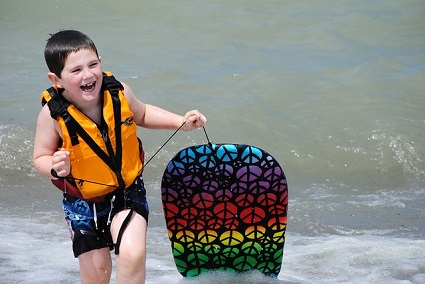Teaching Your Child To Communicate In 3 Easy Steps
It can be hard for your child to really communicate how she or he is feeling, especially during the early years. At this age, children often just do lots of grunting or pointing, instead of using words to express themselves properly. They often will turn to throwing tantrums if their gestures don’t work. Tantrums may include crying, screaming, kicking and hitting.

These behaviors are all ineffective. However, your child really doesn’t understand this. The only thing she understands is she needs or wants something but can’t find an effective way to verbalize it. She is also very frustrated that you don’t understand what the problem is.
It can be very beneficial to teach your child how to effectively communicate at practically any age. Once your toddler has reached the age where she knows what she wants, and can distinguish one item from another, most likely she is willing and ready to learn how to convey this information to you. It is your responsibility to teach your child how to communicate effectively instead of using her teeth and fists. This can be quite a big project to undertake, however children are more than capable of learning this skill.
Here are some useful tips that you can use to help teaching your child to communicate effectively:
Table of Contents
Listen
The first and most important thing that you should do is make sure your child knows you are listening to her. She needs to know someone is attempting to understand what her needs are. When she is attempting to say something to you, give her your undivided attention. Let her know you are listening and really would like to help her. Explain that you understand she wants something, and ask if she can tell you what she wants.
Listen carefully to the words she is saying, or partial words. If she tries to pronounce a word, but isn’t able to form the syllables quite right, try helping her out just a little bit without being pushy. For example, maybe she is saying what sounds like “tees.” Try to figure out what she is talking about. Ask her, “are you asking for some cheese?” If she nods yes, then you’re headed in the right direction. If not, just keep trying until you figure out what she is trying to say.
Speak Up
There may be times when your child isn’t able or willing to speak up and let you know what she wants. You may need to vocalize her needs for her. If she isn’t able to come up with quite the right words, let her rely on guiding you to the object instead and point at it. Once you have figured out what she wants, tell her what the word is.
Tell her, “that is a cracker. Is that what you want?” If she nods yes, give her the cracker and say the word again. If she responds by saying the word herself, reinforce what she has done by praising her. Let her know that you are very proud of her. Speaking in a very friendly and calm way to your child is one of the best ways to teach language skills to her.
Enforce And Explain
Whenever your child is acting up, especially out in public, pulling her aside and taking the time to discover what is wrong can be quite beneficial. If there are many things going on at the same time, it may simply be a case of your child being over-stimulated. It may be helpful to pull your child aside and have a one on one conversation. This example can teach her patience as well.
Bend down and talk to her eye-to-eye. Use a calm and quiet voice and explain to her that she needs to calm down. Then she can tell you what is wrong in her own words. Once she can articulate what the problem is or what she wants, then you can patiently explain to her that throwing a fit isn’t the way to get what she wants. If she can ask is a nice way, that is a much better way of getting it.
Use positive reinforcement whenever you are trying to teach your child how to communicate. When your child finally is able to communicate what she wants, praise her. It does take time to teach your child how to communicate without throwing a tantrum. However, if you can exercise some patience, you will be able to help your child get to the point where she can talk through her problems.






